- News
- Reviews
- Bikes
- Accessories
- Accessories - misc
- Computer mounts
- Bags
- Bar ends
- Bike bags & cases
- Bottle cages
- Bottles
- Cameras
- Car racks
- Child seats
- Computers
- Glasses
- GPS units
- Helmets
- Lights - front
- Lights - rear
- Lights - sets
- Locks
- Mirrors
- Mudguards
- Racks
- Pumps & CO2 inflators
- Puncture kits
- Reflectives
- Smart watches
- Stands and racks
- Trailers
- Clothing
- Components
- Bar tape & grips
- Bottom brackets
- Brake & gear cables
- Brake & STI levers
- Brake pads & spares
- Brakes
- Cassettes & freewheels
- Chains
- Chainsets & chainrings
- Derailleurs - front
- Derailleurs - rear
- Forks
- Gear levers & shifters
- Groupsets
- Handlebars & extensions
- Headsets
- Hubs
- Inner tubes
- Pedals
- Quick releases & skewers
- Saddles
- Seatposts
- Stems
- Wheels
- Tyres
- Health, fitness and nutrition
- Tools and workshop
- Miscellaneous
- Tubeless valves
- Buyers Guides
- Features
- Forum
- Recommends
- Podcast
feature
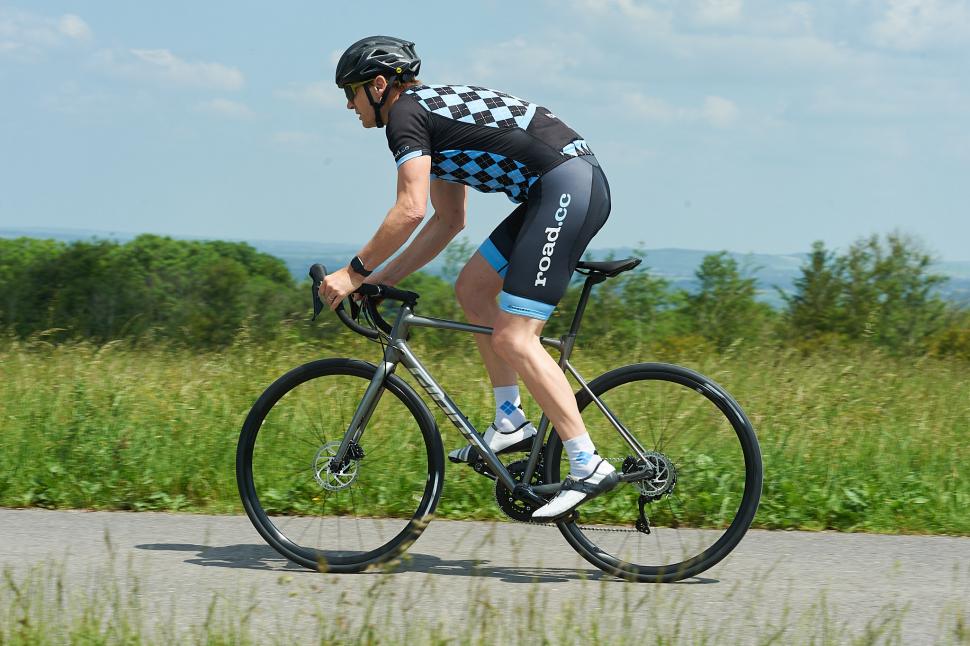 2021 Giant Contend SL 1 Disc - riding 2.jpg
2021 Giant Contend SL 1 Disc - riding 2.jpgHow training zones can help you get your greatest cycling fitness gains
Training zones based on power and heart rate help you ride at the right intensity to get the benefits you're after for any session. Here's your guide to zones one to seven, as well as the more individualised iLevel system, so you can maximise your fitness gains on each and every ride.
The target for a particular ride might be to complete four 10-minute intervals at “zone four”, for example. Working in this zone will feel like the same intensity for all riders, it’s the heart rate and power targets that will be different values for each of us, based on our fitness levels.
Here’s why training zones are important, how to use them, and how to work out yours, with expert advice from Liam of Holohan Coaching.
This feature can also help you understand other fitness training features on road.cc (or elsewhere too) that refer to various training zones.
Why you should be using training zones
By training to zones, you can be sure you’re pedalling hard enough during intervals and going steady enough to soak up the miles on an endurance ride. Using training zones also guarantees you’re spinning the legs softly enough on recovery days to recover effectively ahead of your next block of harder days.
> How to maximise your fitness when you get to 40+
“It’s a way for coaches to communicate with athletes,” notes Liam of Holohan Coaching.
“But what matters most is the underlying physiology and what you’re trying to achieve when you prescribe sessions using these zones. It’s important to understand the basis of them, the relationship between the physiological adaptation that you want at the end of it all and what training you’re doing.”
Without a coach, using training zones is a way for you to ensure you’re spending enough time in each zone and to give your rides some structure.
If you’ve got limited time to set aside for riding your bike, by understanding and using your training zones you can optimise the content of each of your session to make your training as time efficient as possible.
Find out more about how to build your fitness when you’re time-crunched over here.
If you’re riding solo, using training zones to structure your ride gives you a chance to pack in some real quality as without friends or a group setting the pace you’ll be able to stick to the ideal intensity. Planning your intention for the ride beforehand will also help you head out and complete the session, and while you’re out on the road having intervals will make it a lot more fun and interesting.
Check out more tips on how to maximise your rides-for-one over here.
Online platforms such as Zwift use training zones for structuring workouts as well as training plans that span from around four to 12 weeks. By setting your zones you’ll be able to ride these sessions at the correct intensity.
Although psychological factors on the day such as mental fatigue and stress should not be dismissed, it’s useful knowing the physiological effort you should be aiming for.
The physiological effort can be determined by either heart rate or power data readings, and to get the most out of each data set it’s best to use both (assuming you have a heart rate monitor and a power meter) as they each have benefits.
> 12 reasons why you should buy, and use, a power meter
Power meters track the effort you’re putting out and are useful for tracking your progress every session, while heart rate monitors are important as they reveal the current physiological stress on your body as you’re riding—think of power as the output and heart rate as the input.
> Cycling power meters: explore these 25 systems to find the best one for you
It’s worth noting, heart rate can be affected by other factors including heat, caffeine consumption and training load, whereas power meters are not affected by any outside variables.
> 10 best heart rate monitors for cycling - get useful fitness data
Zones 1 to 7: what are they and how should you use them?
“Originally there was a three-zone model that was based on your physiology, with everything below the ventilatory threshold one (VT1) being easy,” Liam explains.
As the exercise intensity increases, when blood lactate accumulates faster than it can be cleared, that’s VT1, the crossover point, and this is characterised by athletes breathing faster during an effort.
“What the ventilatory zones tell you is kind of what’s going on under the hood, so to speak,” Liam says.
“When power meters became commercially available that’s when it kind of evolved into riders adopting FTP (see below) and the zone system set out by Dr Andy Coggan. It’s based on functional threshold power and not on physiological tests like the first three-zone system.”
> What is FTP? 7 key facts to learn about functional threshold power, a major training metric
While there are still different beliefs on the distribution of the zones, here’s the seven-zone system suggested by Coggan, with details on the power and heart rate band, as well as some of the benefits of packing in time at each intensity.
> Find out more about how to maximise your recovery and build your fitness over here.
| Zone | Name | Power (% of threshold power) | Heart rate (% of threshold HR) | Use for | Expected physiological adaptations |
|---|---|---|---|---|---|
| 1 | Active Recovery | Less than 55% | Less than 68% | Easy spins up to 1 hour |
• Stretched and loosened muscles
• Mental refresh |
| 2 | Endurance | 56 - 75% | 69 - 83% | Long rides (3+ hours) | • Increased aerobic capacity |
| 3 | Tempo | 76 - 90% | 84% - 94% | Blocks of 30 mins to 1.5 hours | • Increased muscle glycogen storage |
| 4 | Lactate Threshold | 91-105% | 91-105% | Blocks of 8 to 30 mins | • Increased muscle mitochondrial enzymes |
| 5 | VO2 Max | 106 - 120% | More than 106% | 3 to 8 mins | • Increased plasma volume • Increased stroke volume • Hypertrophy of slow-twitch muscle fibres |
| 6 | Anaerobic Capacity | More than 121% | N/A | 30 secs to 3 mins high-intensity intervals |
• Increased anaerobic capacity (lactate tolerance) • Increased muscle high energy phosphate stores |
| 7 | Neuromuscular Power | Maximal | Maximal | Less than 30 seconds | • Hypertrophy of fast-twitch fibres • Increased neuromuscular power |
How to set up your zones
While the gold standard is to get your unique physiology tested by completing VO2 max and lactate tests conducted in a laboratory setting, it is also possible for you to determine your zones by yourself, indoors or out.
FTP Test
FTP stands for Functional Threshold Power and it’s basically a measure of the highest power you can sustain for around an hour.
> What is FTP: 7 key facts to learn about functional threshold power, a major training metric
Pushing yourself to your absolute limits for a 60 minute sustained effort doesn’t sound appealing and it isn’t so practical either. Dr Andrew Coggan found that taking 95% of the maximum power you can put out for 20 minutes offers a generally accurate approximation of your FTP.
Completing this test can be done with a power meter or on a smart turbo trainer with an integrated power meter.
> 12 of the best smart home trainers for 2021 - get fit indoors
You can also determine your threshold heart rate by using the average heart rate of your last 15 minutes in your FTP test.
This FTP test is practical to carry out as you can fit into a shorter training slot window and it’s easier to assess on a regular basis for up-to-date numbers on your fitness level. If you’re completing the test out on the road, it’ll be easier to find a road without many junctions for a 20-minute effort than a 60-minute one so you’ll have fewer interruptions for an accurate test result.
Liam does admit though, “it’s very broad and there’s lots of margin for error”.
The pacing for the 20-minute testing effort can be difficult to judge. It’s easy to push too hard at the start and burn up, or begin conservatively and not have given it your all. However, as you repeat the test you’ll have a better idea of the watts you can produce, increasing the accuracy of your results over time.
Ramp test
If pacing is something you really struggle with, you could complete a ramp test at home instead.
After warming up, you gradually increase the power in one-minute increments until you can no longer maintain the target power. Ric Stern of CycleCoach ascertained that FTP can be calculated from a ramp test by using 75% of your best one-minute power produced, the final target power you were able to hold at the end of your ramp test.
It’s important to repeat this ramp test fairly regularly, roughly every month or two, so that your training zones are set to your current abilities.
A ramp test can be more accurate than a steady paced all-out time trial effort as it takes into account physiological changes as the intensity increases, although some criticise ramp tests as a means of determining your FTP – you could have quite a high anaerobic capacity and do well at a ramp test but not be able to put out a solid 60-minute power.
iLevels
For those looking for better calibrated training zones across the whole spectrum of your fitness, iLevels (‘individualised levels’) could be the zone system for you.
“The Andy Coggan system has evolved to a nine zone system, but they're not called zones, they're levels,” Liam says.
The levels are classified as:
• Recovery
• Endurance
• Tempo
• Sweetspot
• FTP
• FRC/FTP
• FRC
• Pmax/FRC
• Pmax
TrainingPeaks describes FRC (Functional Reserve Capacity) as "the total amount of work that can be done during continuous exercise above FTP before fatigue occurs", expressed as kilojoules per kilogram (kJ/kg). Pmax is "the maximum amount of power that can be generated for a very short period of time (at least a full pedal revolution with both legs)", expressed in watts or watts per kilogram (W/kg).
The FRC/FTP level is for improving your VO2 max, while the FRC and Pmax/FRC levels are both for developing your anaerobic capacity. The FRC level is for improving your anaerobic stamina as it is at a slightly lower intensity but for longer intervals. Then the Pmax/FRC develops maximum anaerobic power output.
“The trouble with the seven zone system is that it’s not very individualised as all of the intensities are determined by FTP,” Liam points out.
“As a 60-minute test is impractical it uses 95% of what you can do for 20 minutes to establish your FTP. There’s a bit of deviation there between one athlete and the next, so already there’s a margin for error.
“But the main problem is that when it prescribes training off that FTP number – for example using 120% of FTP to predict someone’s maximal aerobic capacity – there’s a lot of variability between athletes here, above FTP.
“The reason I use the iLevel system as a basis for prescribing training to my coached riders is that it doesn’t just base the zones off that one data point, it uses every second of every ride that you do and it generates your unique fingerprint of your physiology with a power-duration curve.
There’s one big downside though: accessibility. Regular calibration is also needed. “You’ve got to have the right advanced analytical WKO software to do it so I’d say it’s more for experienced athletes as opposed to someone just coming into it.”
If you don’t want to learn the software yourself you could always find yourself a coach who uses the iLevel system.
Now you have your training zones set up, check out our fitness features over here to make the most of them.
Anna has been hooked on bikes ever since her youthful beginnings at Hillingdon Cycle Circuit. As an avid road and track racer, she reached the heady heights of a ProCyclingStats profile before leaving for university. Having now completed an MA in Multimedia Journalism, she’s hoping to add some (more successful) results. Although her greatest wish is for the broader acceptance of wearing funky cycling socks over the top of leg warmers.
Latest Comments
- Joe Totale 29 min 47 sec ago
20 zip up sandwich bags from Tesco are currently £2, or 10p per bag. They work just as well and there's even a significant weight saving over this...
- 2wheelsRbetterThan4 49 min 39 sec ago
You know its just maths right? Percent represents a fraction...
- brooksby 1 hour 20 sec ago
A man called me a terrible mother for how I was taking my kids to school (Metro)...
- teckert 6 hours 1 min ago
Well it appears Velogames isn't overly good at getting races up too quick either. ...
- hawkinspeter 9 hours 27 min ago
Can't that be resolved with different gearing though? (Smaller chainring)
- David9694 10 hours 19 min ago
1981 Raleigh brochure on EBay - a missing link in the catalogues available on line. Bidding starts at £35. ...
- S.E. 12 hours 1 min ago
It's probably in Romania by now, or Poland, but a picture would certainly help, size too?
- S.E. 12 hours 11 min ago
Sounds like spam... which bike was used for the kit, please at least post pictures with the end result.
- chrisonabike 12 hours 16 min ago
He needs a good lawyer......
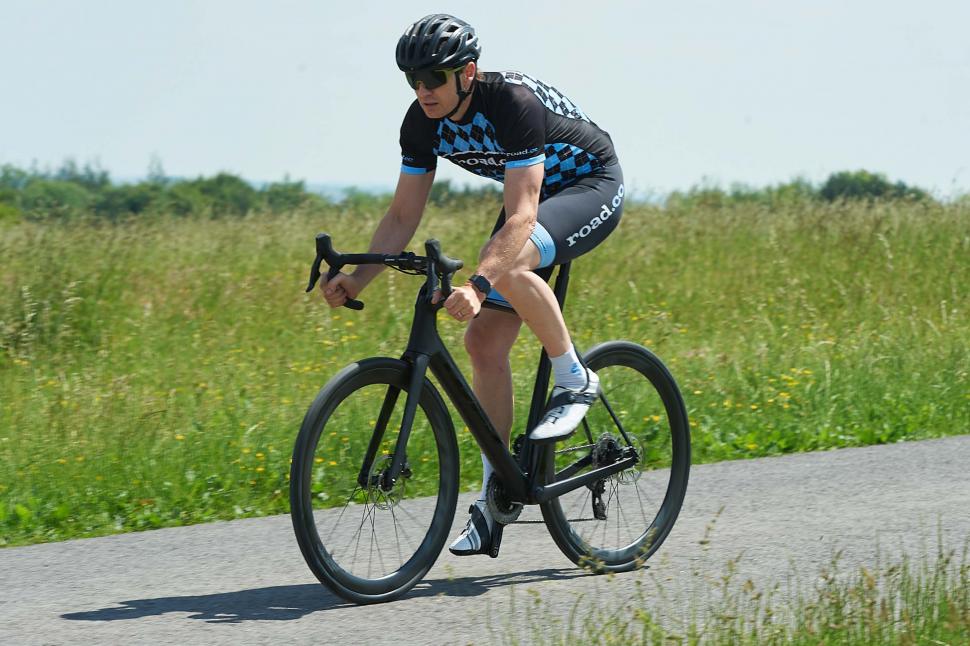


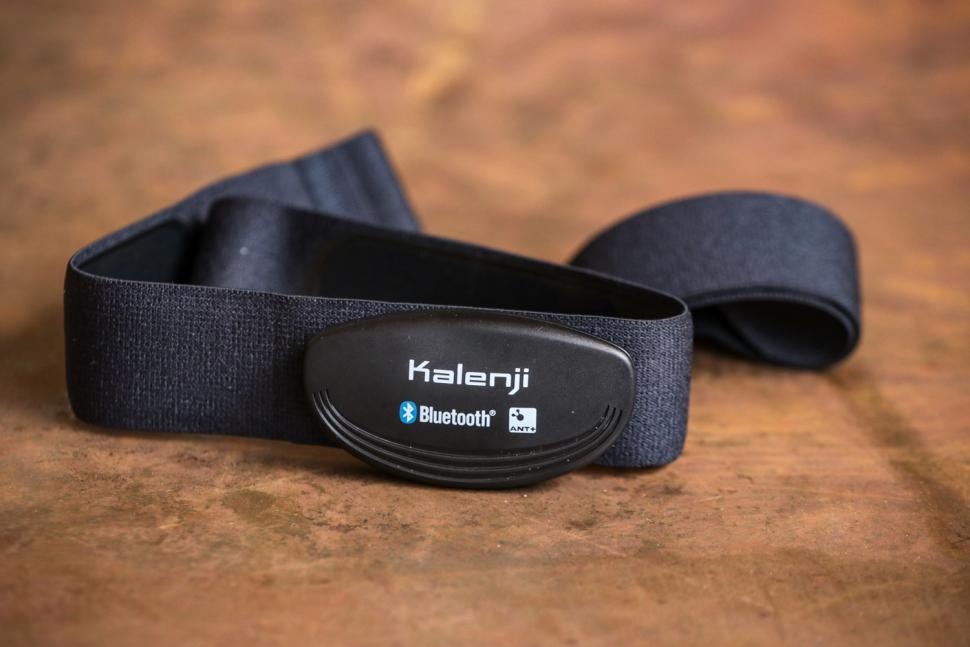

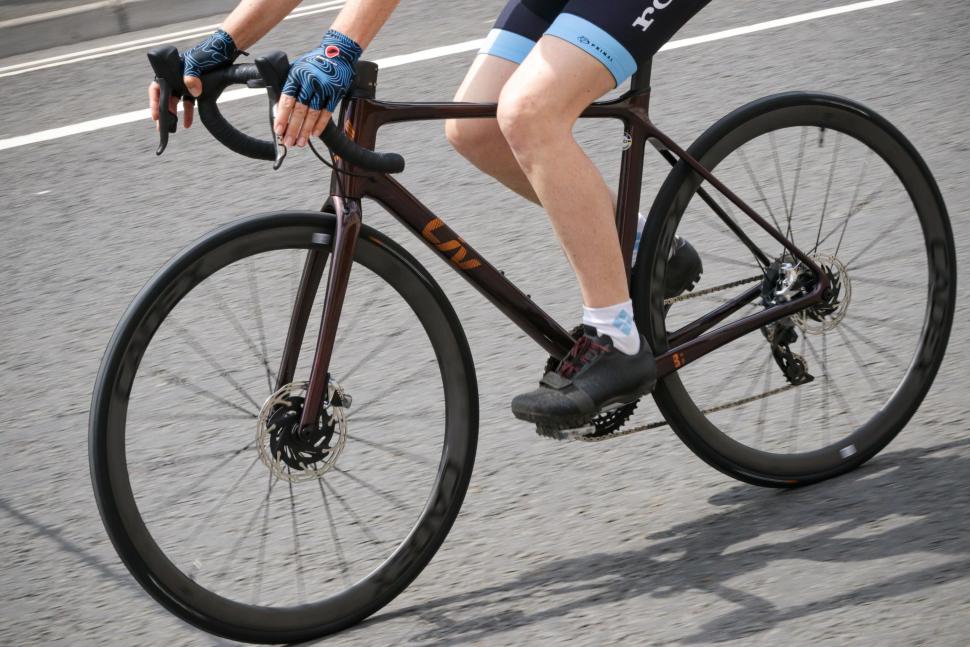
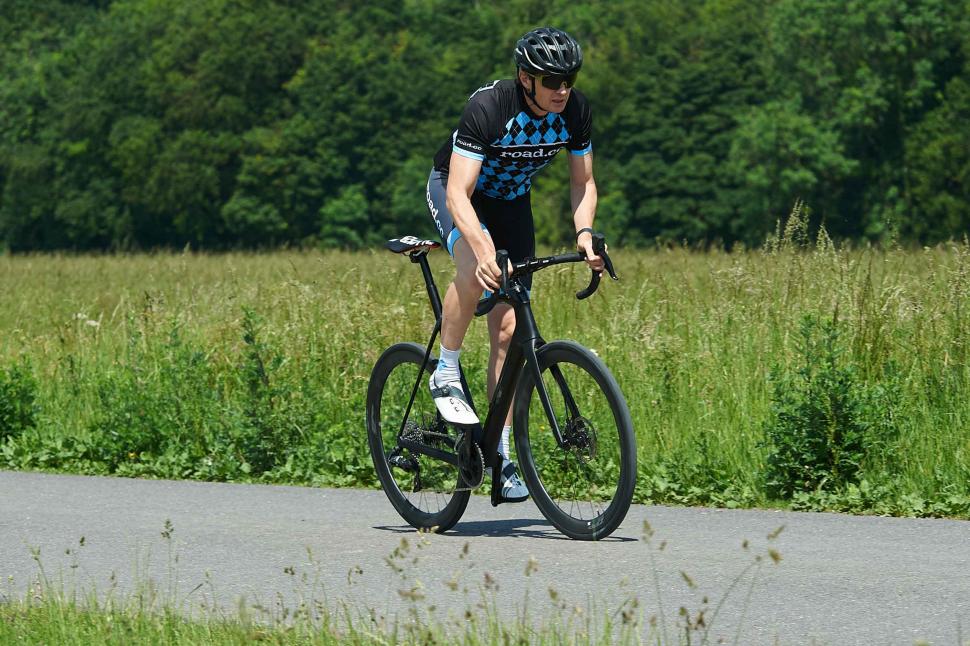
Add new comment
5 comments
I'm no expert though I have been self coaching for many years. I use the Coggan 7 zone system, for me 9 levels is too much to cope with unless perhaps it is all done on the trainer.
However, if you are going to suggest a 9 level system it would help if you correct the mistake FTC/FTP to FRC/FTP and perhaps tell us what FRC stands for (Functional Reserve Capacity (unless I missed it?). Is FRC the same as W Bal?
When you say “Originally there was a three-zone model that was based on your physiology, with everything below the ventilatory threshold one (VT1) being easy,” this makes it sound like it is no longer relevant but as far as I know there is still a strong following of the 3 zone polarised approach?
The three zone system does look good, and rather more approachable. That said, I've had good results over the years from TrainerRoad etc using the 7 zones.
What does intrigue me is the notion of the FTP test. Even when I'm properly fit I'd struggle to maintain 95% of tested FTP for an hour... is there therefore a risk of overtraining as essentially the zones are too high if one hour power truly is the measure? Coggan himself said the best measure to use was results from races etc. I wonder if it is actually best to do a one hour race or ascent of the Alpe or Ven-Top on zwift etc and see what you actually achieve.
I have used Coggan's 7 zone system for many years but have considered trying the 3 zone system, there are still many advocates of this system.
FTP is as you suggest, a theoretical figure based on the fact that for most people maintaining full race pace in anything less than a full on race is not really acheivable. The 20 minute test x 95% can only be an approximation of your 60 minute best power, but isn't this why there is a CP (critical Power) and an FTP? I think CP is actual 60 minute best and FTP is just a test to set your zones, I'm not sure as it needs to be exactly the same as your CP, just so long it is your best 20 mins.
Likewise the Ramp test to acheive your FTP has gained popularity, perhaps because it is mentally much easier than the 20 minute test and you don't suffer from the problem of going out too hard as I often do and then fail at about 10 minutes.
The ramp test, developed (I think) by Dr Stephen Lane suggests that it is best used as a way of establishing a pace for your 20 minute test rather than a test in itself, so if your ramp tests gives you an FTP of 300 watts then you can aim to start your 20 minute test at 300w or maybe 295 get settled in and then push it by feel. However having done a few ramp tests it seems close enough to me to be able to establish your zones.
Having initially got your FTP and set your zones with perhaps one of the methods above I agree that if you get a better 20 minute time in a race, in particular a TT or on a long solo break perhaps then definitely reset your FTP to 95% of that.
Then of course you need to set your other best times 5s, 1 min, 5 min for your Power curve, which these days I can't be bothered to do as a test and prefer just to use my best most recent as recorded on Golden Cheetah.
Makes sense... I've always found the zones to work fine after shorter tests. Just always wondered about the relationship between true 'hour power' and tested FTP.
I've certainly found the ramp test gives a very representative result relative to my typical time trial power output, but with far greater consistency.
I'd like to give the 3 zone polarised training a go, but TrainerRoad and Zwift sessions are all based around the coggan zones. I will have to find some good programs and build my own custom workouts.
All fascinating stuff anyway and structured training certainly brings results.
I suspect that part of the issue with 20min power x 0.95 = 1 hour power, is that normal mortals may have the self discipline to hurt themselves for 20 mins, but just won't hurt themselves for 1 hour. so if your really pushed yourself for an hour, you could, physcially, achieve 0.95 of the 20 min power- but we just aren't prepared to do so, so in the real world we would achieve less than 0.95 of the 20 min power.
I have no idea how that would then feed into the ftp you should use to calculate training zones.